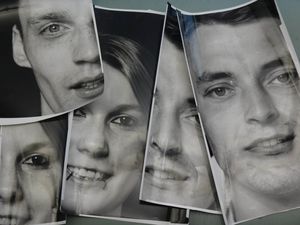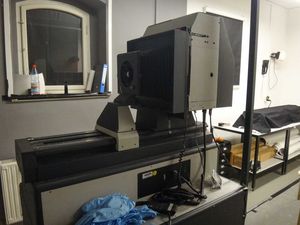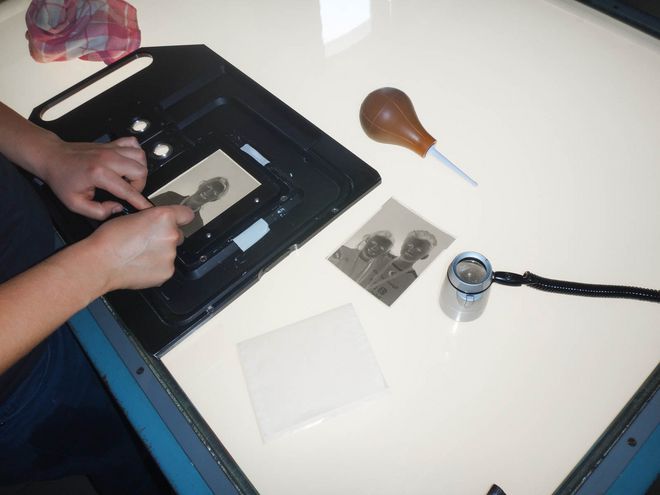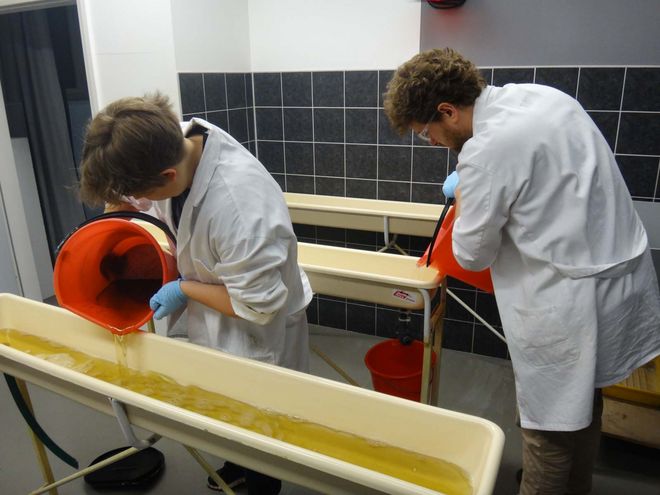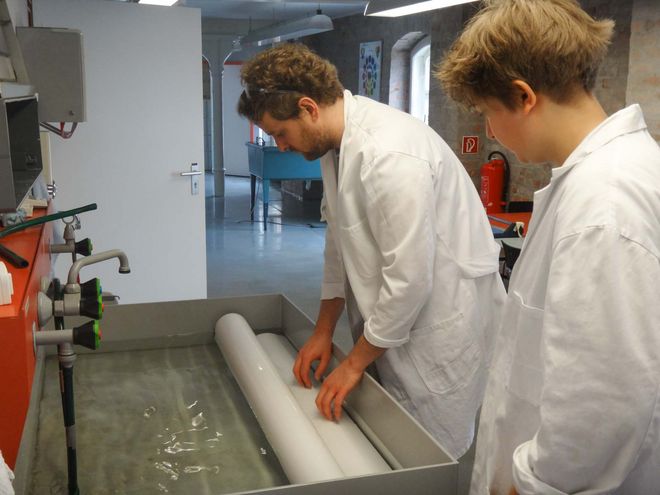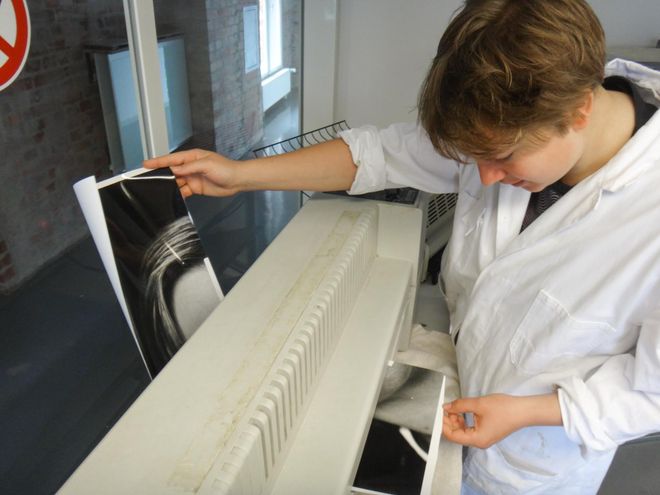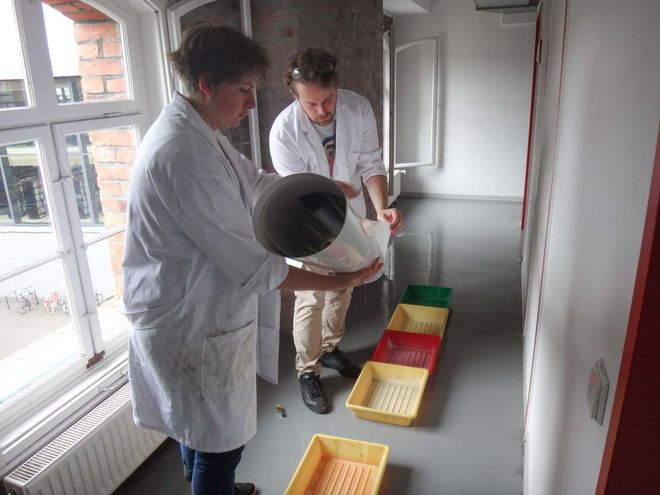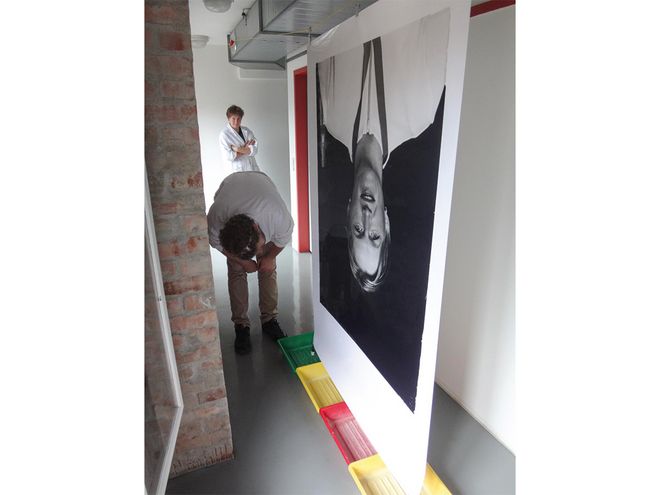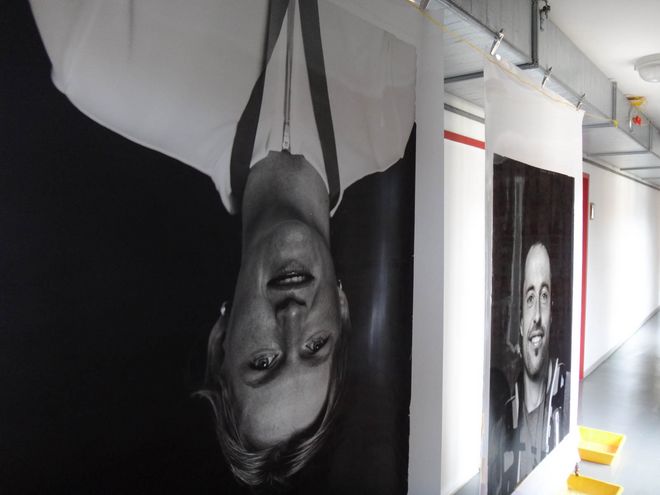Anna and Clemens: Analog is the real thing
Over 15,000 people take part in the Thuringian Rennsteig Run every year. Anna and Clemens, both students of visual communication in the sixth semester, were also there this time. However, they ended up right at the finish line: because instead of running, they photographed - the athletes right after the run.
For the project "status gold _ the real thing", which was accompanied by the artistic assistant Dipl.-Des. Jens Hauspurg, Anna and Clemens worked together with the Thüringer Tourismus GmbH. In the finish area of the Rennsteiglauf, they had set up a large-format analogue camera so that they could photograph around 50 runners there. They also took digital pictures that will be used for a photo series about the participants of the race in a magazine.
Today, the students in the Photo Workshop are exclusively interested in negatives. They want to print analogue pictures that are about 1.27 metres wide and 1.50 metres high. To do this, they place the negative in an enlarger located in the large-format darkroom. Here, the negative is X-rayed and projected onto photographic paper. Anna and Clemens then develop, stop, fix and water the photo in individual steps. To dry the picture, they finally hang it up in the workshop for at least half a day.

https://vimeo.com/151002348
Click the Play button to load and view external content from Vimeo.com.
Automatically load and view external content from Vimeo.com (You can change this setting at any time via our »Data protection policy«.)
What sounds simple is actually quite complicated. Every single step has its own pitfalls. Photographing with large-format technology, choosing the right photo paper and also the exact choice of exposure time need to be carefully considered and require numerous test runs. The result is impressive in any case. The large, analogue photos have a different effect than digital pictures, if only because of their sharpness. They were exhibited at summaery2015 in the old state bank in Weimar's Steubenstraße and on the internet at www.statusgold.de/wordpress/.
Even though Clemens enjoyed working in the large-format darkroom: his favourite in the Photo Workshop is the colour darkroom. It's more for the impatient. "The whole process happens here in a single machine. You expose your picture, push it in at one end and after 4 minutes it comes out fully developed, stopped, fixed, watered and dried," Clemens explains. Next semester, better colour photos after all?

https://vimeo.com/151002349
Click the Play button to load and view external content from Vimeo.com.
Automatically load and view external content from Vimeo.com (You can change this setting at any time via our »Data protection policy«.)

